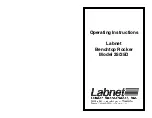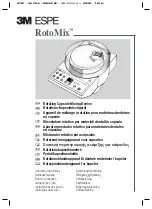
PAGE 127 OF 164
PNEUMATIC MAST WITH REMOTE LOCKING SYSTEM
OPERATING INSTRUCTIONS
TP-5580101-A
FEBRUARY 2022
6 Operation
This section describes the general operation of the mast system. Use care to understand and
follow all precautions while operating.
6.1 Pre-Operation Check
Before operating the mast system, ensure:
• All operators read and understand the entire operation procedure and are properly trained.
• The mast system is undamaged. If damage is apparent, do not use the mast system, and
have it serviced prior to use.
• All electrical cables are undamaged and properly terminated.
• The area is free of power lines or other overhead obstructions. The mast system location
should be no closer than a horizontal distance equal to the extended height of the mast away
from power lines.
• Any objects that might obstruct motion of the mast system, cause binding, or hinder mast
system function are removed.
• The mast system and payload are properly installed.
• When using a vehicle, the vehicle is not moving and is on level terrain.
• Masts extended up to 60 feet (18.2 m) can be operated on terrain having a slope up to:
• 5° of vertical for Ultra Heavy Duty masts with payloads of 200 lb. (90.7 kg) or less
• 4° of vertical for Ultra Heavy Duty masts with payloads of 200 lb. to 800 lb. (90.7 kg to
362.9 kg)
• 2° of vertical for Ultra Heavy Duty masts with payloads of 800 lb. to 1,200 lb. (362.9 kg
to 544.3 kg)
• 5° of vertical for Heavy Duty masts
• Ultra Heavy Duty Masts: Masts extended 60 ft. to 80 ft. (18.2 m to 24.4 m) can be operated
on terrain having a slope up to:
• 4° of vertical for payloads 600 lb. (272.2 kg) or less
• 1° of verticals for payloads 600 lb. to 1,200 lb. (272.2 kg to 544.3 kg)
Sail area could impact the mast deployment angle if the wind is blowing in the direction
of the tilt. Consult factory.
• Any transit tie-downs have been removed.
• The mast system area is free of personnel.
• The operator has full view of the mast system during use.
Summary of Contents for 10-60 HDL
Page 2: ......
















































